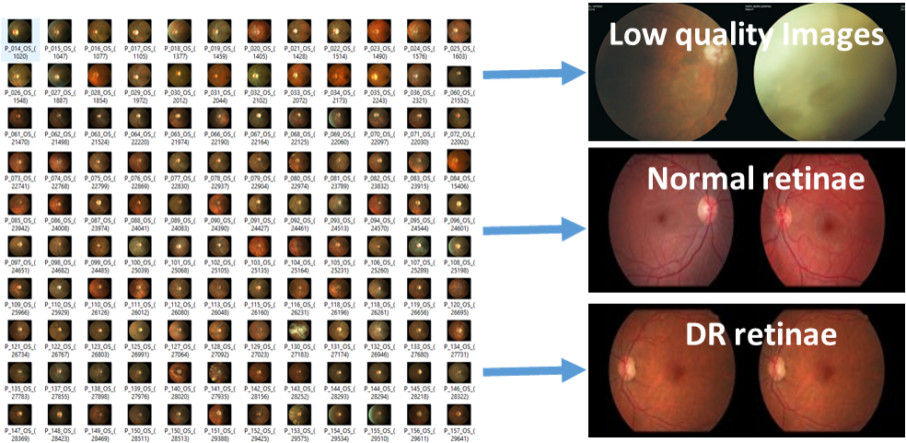SCREEN-DR-Image Analysis and Machine Learning Platform for Innovation in Diabetic Retinopathy Screening (CMUP-ERI/TIC/0028/2014)
PI: Aurélio Campilho (INESC TEC/FEUP)
Research teams: CMU, INESC TEC, Universidade de Aveiro
Organisations: ARS-N/MS; BMD-Software; Hospital de São João; Centro Hospitalar do Tâmega e Sousa; First Solutions; UPMC, Pittsburgh, USA
Starting date: April 1, 2016 Duration: 48 months
Keywords: Medical Image Analysis; Computer-aided diagnosis; Collaborative PACS-Cloud; Diabetic Retinopathy Screening
Abstract:
Diabetic Retinopathy (DR) is a leading cause of blindness in the industrialized world that can be avoided with early treatment, demanding an earlier diagnosis in a stage where the treatment is still possible and effective. DR evolves silently without any visual symptoms, during the early stages of the disease.
The Portuguese North Health Administration (ARSN) is implementing a mass screening for DR, with the goal of making eye exam of about 75% of identified diabetics, from an estimated diabetic population of 250.000, in the North of Portugal.
SCREEN-DR is the platform to be developed in this project to face three main challenges. The first challenge is to automatically evaluate image quality, and consequent removal the low quality images from the workflow. The second is to automatically detect the non-pathological cases. If these two challenges are overcome, the ophthalmologists need to analyse only about 25% of the cases, which will be an important gain in terms of time-to-decision and efficacy. Additionally, the third challenge is to automatically grade DR in several scales of the disease severity. Each one of these challenges corresponds to an image module that will be remotely accessible by an image web service.
Under this context, the vision of the consortium SCREEN-DR is to create a distributed and automatic screening platform for DR, based on the state-of-the-art Information and Communication Technologies (ICT), including advanced Picture Archiving and Communication Systems (PACS) management, Machine Learning and Image Analysis, enabling immediate response from health carers, allowing accurate follow-up strategies, and fostering technological innovation.

